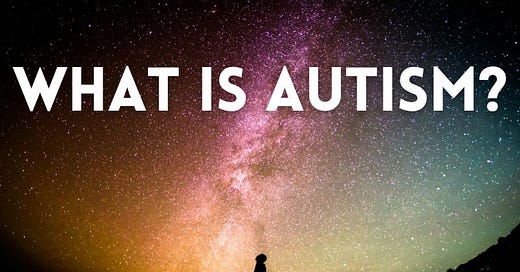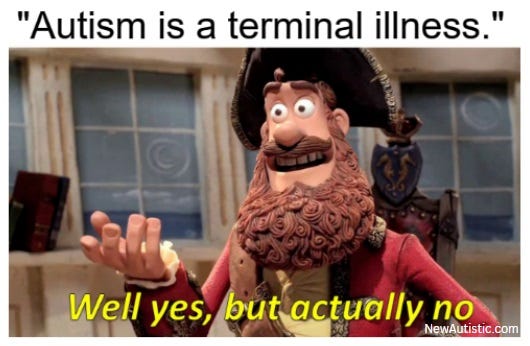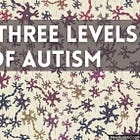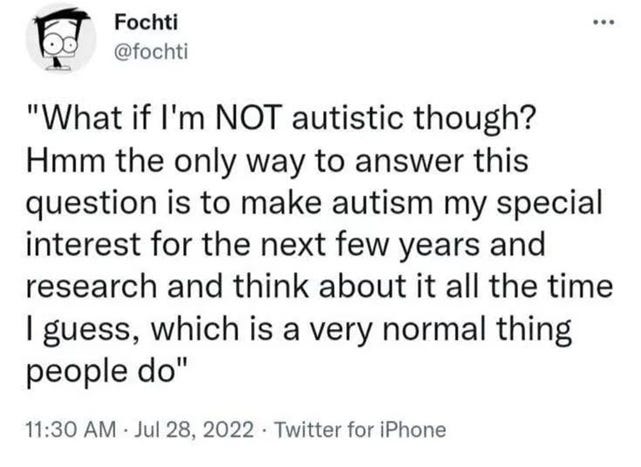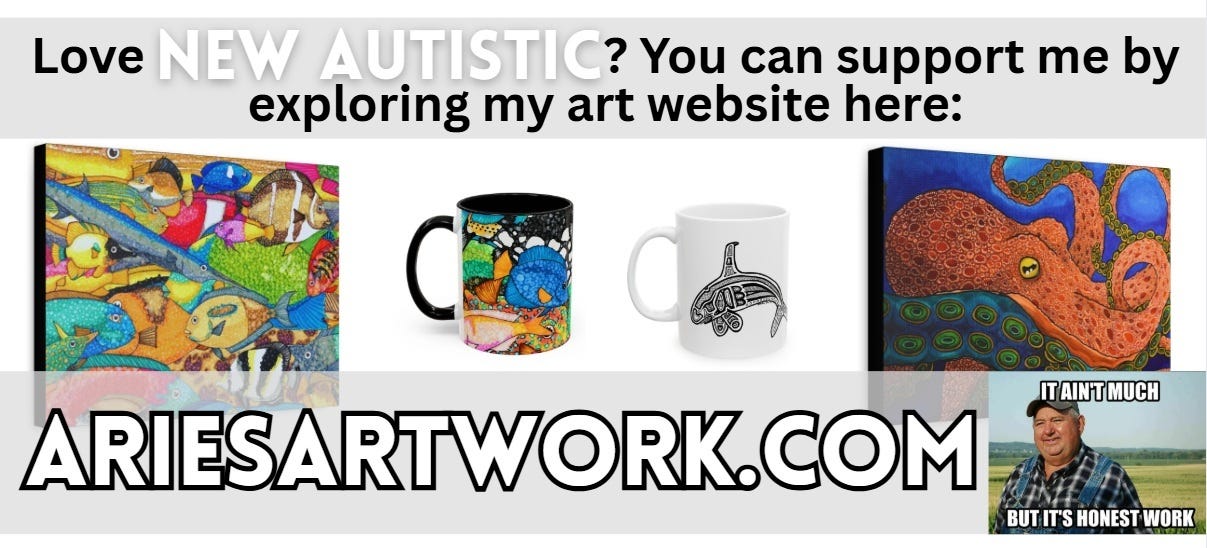If you type “what is autism?” into Google or other search engines, you’ll come up with a number of different results, definitions, and descriptions — some outdated, some accurate, and some factually incorrect. It can be difficult to determine what is true and what isn’t, especially in this age of misinformation and disinformation. I’ve linked my findings below so you can see where the information I found came from. As always, I encourage you to do your own research and come to your own conclusions.
In addition, I will use the term autism interchangeably with the more formal terminology of Autism Spectrum Disorder (ASD) for the sake of ease and understanding.
Etymology of the Word “Autism”
The word “autism” was first coined by Swiss psychiatrist Eugen Bleuler in 1908. Bleuler used the term autism to describe schizophrenic patients who were withdrawn into their own worlds.
aut: Derived from the Greek word autos, meaning “self.”
ism: Referring to a condition, state of being, or manner of action or behavior characteristic of a specified person or thing.
Taken literally, autism was meant as a way to describe people who were lost or withdrawn within themselves. (As an aside, the Māori word for autism is takiwātanga, meaning “in his/her own time and space,” which I think defines autism very well.)
Descriptions of Autism
Throughout the years, there have been many different descriptions of autism — some academic and some rather derogatory (like wwhen autism was described as a “terminal illness,” which, although technically true, isn’t exactly an accurate portrayal of the condition).
Autism is terminal in the sense that it can’t be cured, but it’s not going to be the reason that someone ends up dead; other comorbid mental and physical health issues that go along with autism would be the main factors in such cases.
Now, let’s take a look at the ways in which autism has been described by medical and psychiatric associations and organizations.
American Psychiatric Association (APA): “Autism spectrum disorder (ASD) is a complex developmental condition involving persistent challenges with social communication, restricted interests and repetitive behavior.”
National Institute of Mental Health (NIMH): “Autism spectrum disorder (ASD) is a neurological and developmental disorder that affects how people interact with others, communicate, learn, and behave.”
WebMD: “Autism, also called autism spectrum disorder (ASD), is a complicated, lifelong condition that includes problems with communication and behavior.”
Cleveland Clinic: “Autism, now called autism spectrum disorder (ASD), is a neurodevelopmental disorder. ASD is a developmental disability caused by differences in your child’s brain. “
Centers for Disease Control and Prevention (CDC): “Autism spectrum disorder (ASD) is a developmental disability caused by differences in the brain.”
Mayo Clinic: “Autism spectrum disorder is a condition related to brain development that impacts how a person perceives and socializes with others, causing problems in social interaction and communication.”
What Autism Isn’t
Now that we know what autism is, it’s time to also address some of the apocryphal beliefs about autism. Autism is not:
an illness
an intellectual disability (although some autistic people may have intellectual impairments, it’s not part of the diagnostic criteria)
a speech impediment or selective mutism
an intentional way someone behaves to be “difficult”
just being socially awkward, quirky, or weird
a monster seeking to break up marriages (as the Autism Speaks organization suggested in their problematic 2009 “I am Autism” video in which they state, “And if you’re happily married, [autism] will make sure that your marriage fails“)
only restricted to children (autistic children grow into autistic adults; hard to believe, I know)
To learn more about other misconceptions about autism, read my article Misconceptions About Autism.
Putting it All Together
Okay, now that we have a better picture of what autism is, we can see that most reputable associations and organizations agree that autism:
is a neurodevelopmental disorder caused by differences in the brain
is a spectrum disorder, with some individuals being more heavily impacted by it than others
impacts people’s ability to interact with others in terms of communication and behavior
impacts people’s lives in terms of restricted interests and repetitive behavior
In essence, autism is a different way of interacting with and perceiving the world. It exists on a spectrum, with some autistic people needing far more support than others. To learn more about the three levels of autism, check out my aptly-named article The Three Levels of Autism.
There is also a growing body of evidence that autistic and other neurodivergent peoples’ brains are structured differently from neurotypical brains (people not on the spectrum), which could explain many of the differences between neurodivergents and neurotypicals. I will write an in-depth article about this at some point.
Autism Defined
You now hopefully have a clearer image of what autism is and isn’t, but know that changes are almost inevitable. I am sure that there will be additional modifications to the Autism Spectrum Disorder (ASD) diagnosis and descriptors in future publications of The Diagnostic and Statistical Manual of Mental Disorders (often referred to as the DSM), as new research and findings are what push science and medicine forward.
That being said, now you know that autism is far more than just a label or a set of behaviors to be understood from a distance; it’s a complex, multifaceted condition that shapes how individuals interact with and perceive the world around them. Despite the growing body of research, there are still many misconceptions and outdated beliefs that cloud the true nature of autism. As we continue to better understand the neurological and developmental aspects of autism, it becomes clear that it is not something to be feared or stigmatized. Instead, autism should be embraced as another way of being, one that reflects the diversity of human experience.
Thanks for Reading!
Thanks for taking time out of your busy day to spend some time with me! I encourage all of my readers to RISE (Reflect, Improve, Strengthen, & Evolve) with me because healing is a lifelong journey — it’s not always easy, but it’s always worth it. You are loved, cherished, and valued. Don’t ever let anyone ever convince you otherwise.
My commitment to bringing you FREE, well-researched, and comprehensive content means I spend considerable time and effort writing each article or post without compensation.
Want to Support Me?
The simplest FREE way you can support me is by subscribing, sharing, or leaving a comment:
I believe in keeping my content accessible to everyone, without paywalls, because I know the work I do matters. For that reason, I’m beyond grateful for any financial support! If you'd like to support me and my work, check out my art website at AriesArtwork.com to bring home something unique or find a gift for that special someone in your life:
I’ll see you again when I’ve got a new info-dump for you, my Newtistics Crew!
—Skylar Aries


